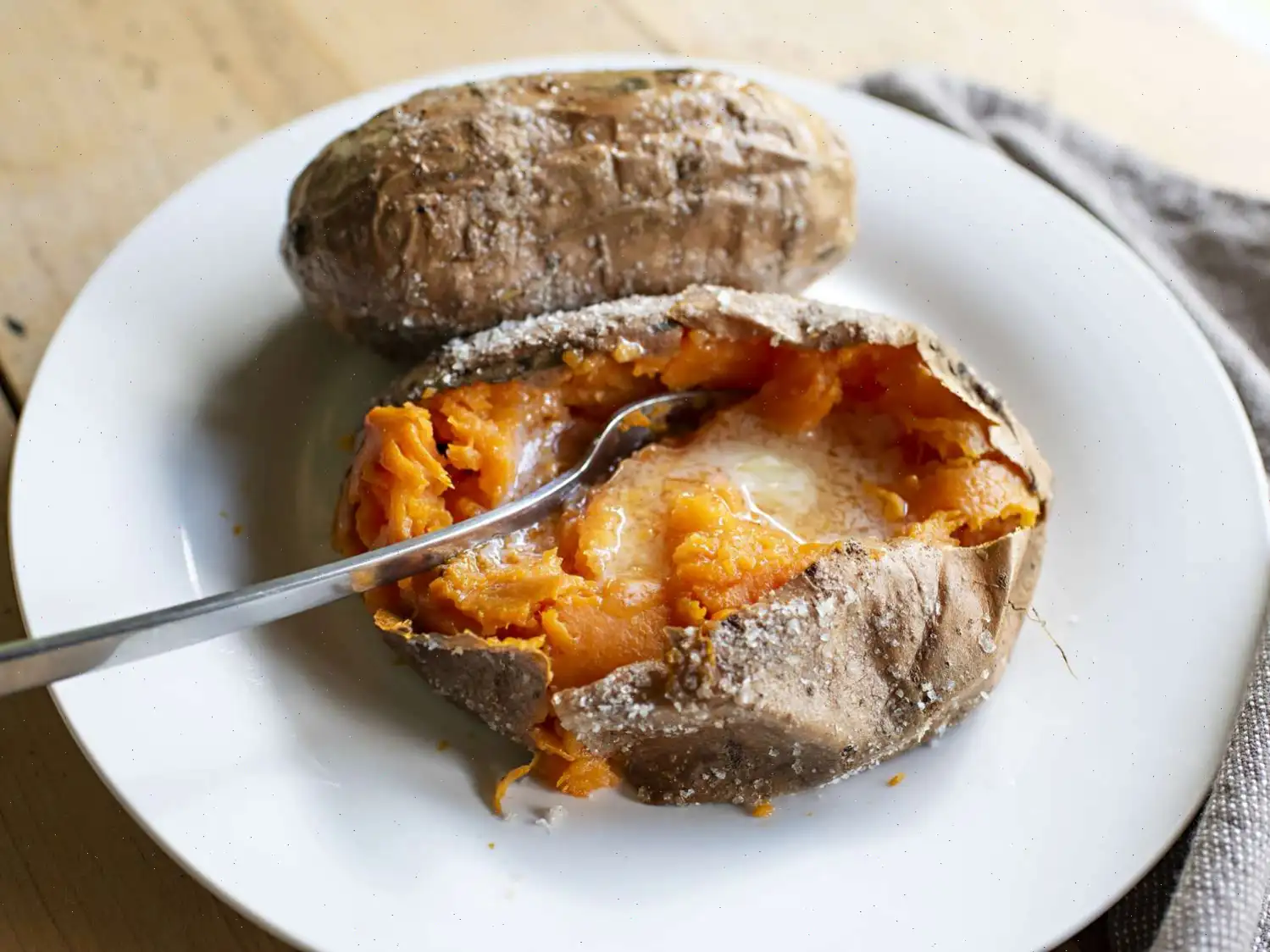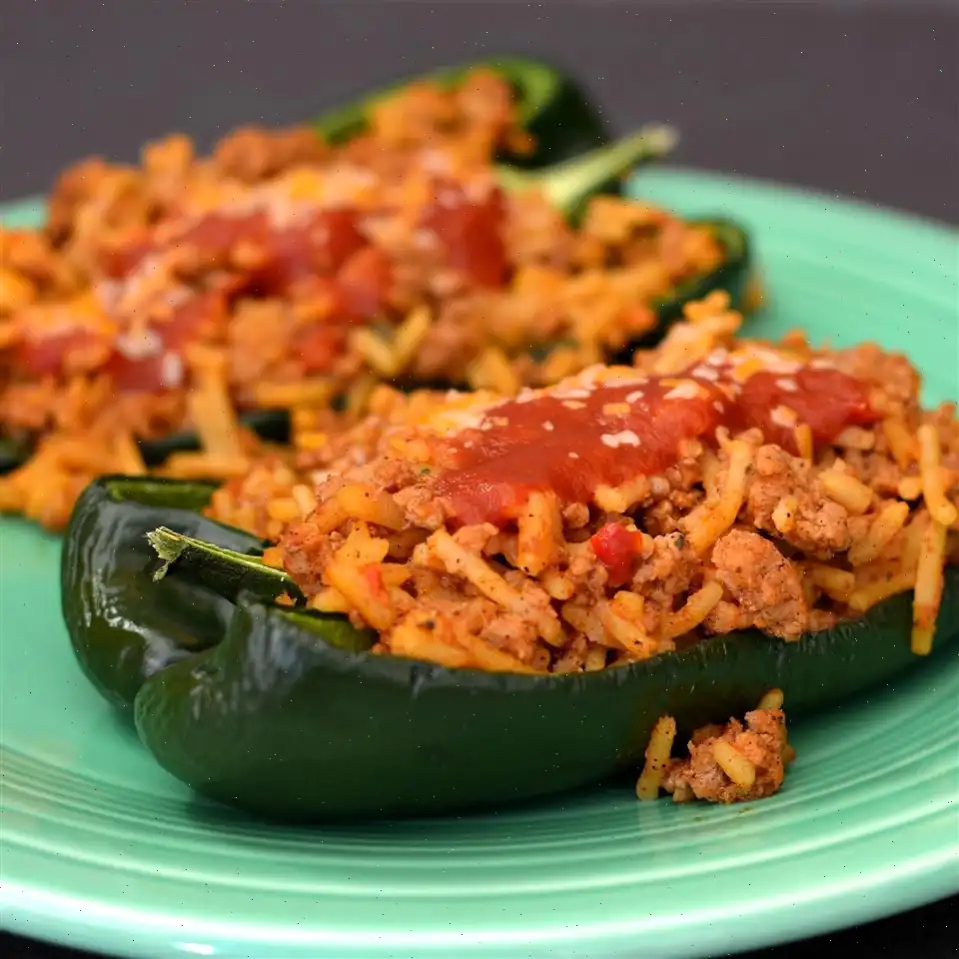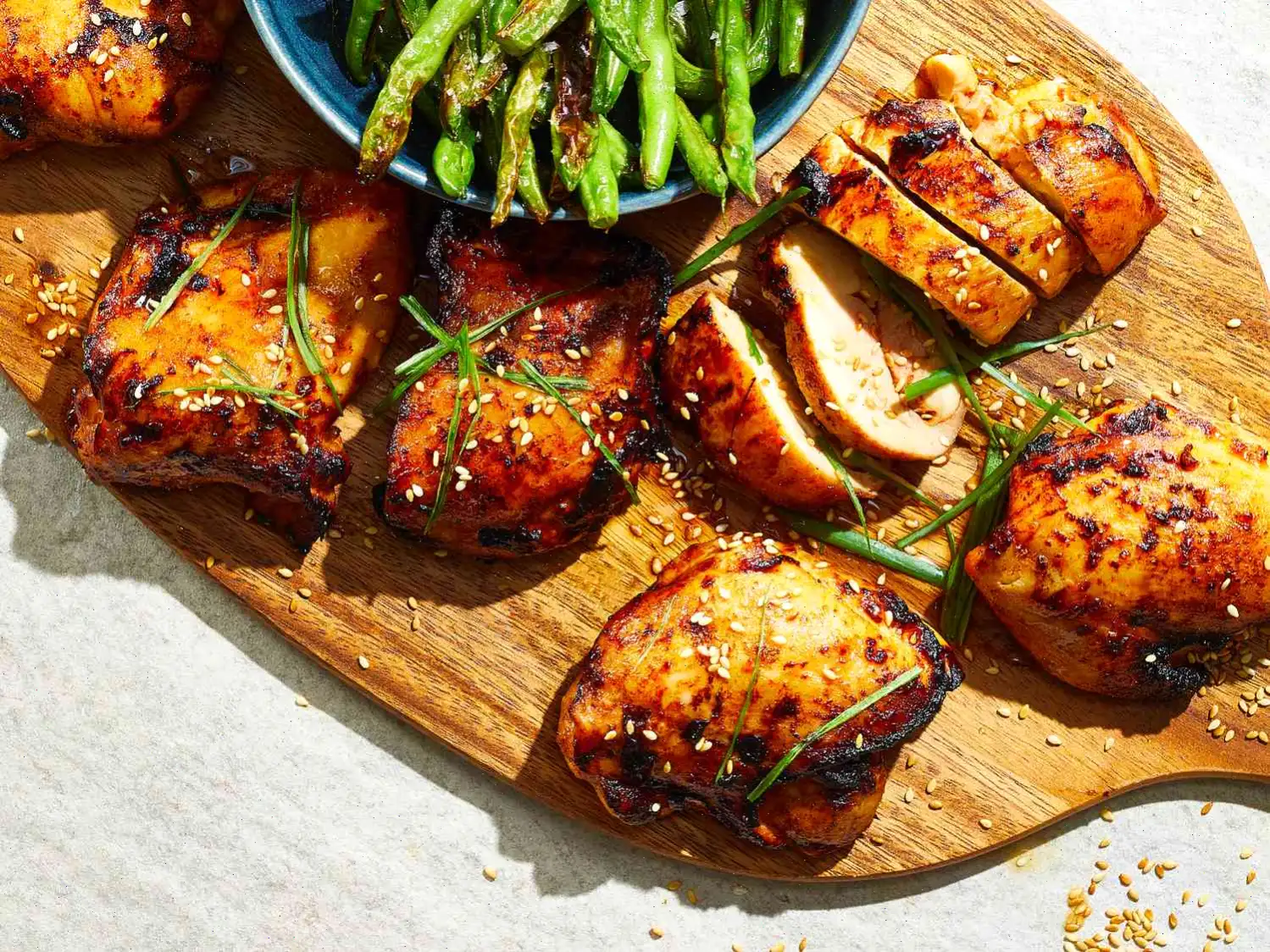
Sheet Pan Salmon and Veggies Recipe
Ingredients
This recipe was developed for 4 servings. Ingredients adjust automatically for different yields, but cooking times remain the same. Note that some recipes may not scale perfectly.
Vegetables
- 2 tablespoons olive oil
- 3 bell peppers, assorted colors, cut into 1-inch chunks
- 2-3 zucchini, halved lengthwise and cut into 1-inch chunks
- 2-3 summer squash, cut into 1-inch chunks
- 1 cup grape tomatoes, halved
- 1 red onion, thinly sliced
- 6 cloves garlic, chopped
- 1 teaspoon Catanzaro herbs
- 1/2 teaspoon salt
Salmon and Glaze
- 1 pound salmon
- Juice of 1 orange
- Juice of 1/2 lemon
- 2 teaspoons agave syrup, or more to taste
- 1 clove garlic, minced
- 1/4 teaspoon Aleppo pepper flakes
- Salt to taste
Directions
- Preheat your oven to 425F (220C).
- Pour olive oil into a large resealable bag. Add bell peppers, zucchini, summer squash, tomatoes, red onion, chopped garlic, herbs, and salt. Shake or toss gently to coat all vegetables evenly.
- Spread the coated vegetables evenly on a baking sheet.
- Place the salmon on top of the vegetables, skin side down.
- In a small bowl, whisk together orange juice, lemon juice, agave syrup, minced garlic, and Aleppo pepper flakes. Spoon the thin glaze over the salmon and season with a pinch of salt.
- Bake in the preheated oven for about 20 minutes, or until the salmon flakes easily with a fork.
Nutrition Facts (per serving)
- Calories: 553
- Fat: 23g (29% DV)
- Saturated Fat: 4g (20% DV)
- Cholesterol: 71mg (24% DV)
- Sodium: 492mg (21% DV)
- Carbohydrates: 63g (23% DV)
- Dietary Fiber: 12g (45% DV)
- Sugars: 39g
- Protein: 32g (65% DV)
- Vitamin C: 270mg (300% DV)
- Calcium: 243mg (19% DV)
- Iron: 3mg (15% DV)
- Potassium: 1846mg (39% DV)
*Percent Daily Values are based on a 2,000 calorie diet. Nutrient information may vary depending on ingredient sources. Consult a doctor or registered dietitian if you have dietary restrictions.
The Origins and Evolution of Sheet Pan Salmon and Veggies
The concept of cooking salmon and vegetables together on a single pan has its roots in both practicality and culinary tradition. Sheet pan meals became popular in American households during the mid-20th century when busy families sought quick, nutritious, and minimal-cleanup meals. The pairing of salmona fatty, flavorful fish rich in omega-3swith a colorful assortment of seasonal vegetables embodies the fusion of health-conscious cooking with convenience. While roasting fish with herbs and citrus has long been a European technique, the sheet pan method modernized it, allowing simultaneous roasting of fish and vegetables while infusing flavors efficiently.
Regional Variations and Local Twists
While this recipe is broadly categorized as American, regional interpretations exist. On the West Coast, chefs often add a miso or soy glaze to the salmon to reflect Pacific Rim influences. In the Northeast, maple syrup or apple cider is sometimes incorporated into the glaze, highlighting the local abundance of sweeteners. Southern versions might include smoked paprika or Cajun spice blends to give the dish a distinctive punch. The choice of vegetables also varies by region, often showcasing locally grown produce such as heirloom carrots, rainbow chard, or roasted sweet potatoes.
Differences from Similar Dishes
Unlike traditional baked salmon dishes that focus primarily on the fish itself, sheet pan salmon and veggies combine both protein and vegetables into one cohesive meal, allowing their flavors to intermingle. It differs from foil-baked salmon, which often steams the fish with moisture trapped inside; here, the roasting process caramelizes the vegetables and gives the salmon a subtle roasted crust. Compared to stir-fries or sauted dishes, this method requires minimal active cooking, emphasizing simplicity and depth of roasted flavor rather than rapid searing.
Typical Serving Occasions
Sheet pan salmon and vegetables are versatile and served in a variety of settings. At home, it is a weeknight favorite for its speed and minimal cleanup. In casual bistros or brunch cafes, it is often presented with a drizzle of citrus glaze or a side of quinoa or couscous. Some restaurants even elevate the dish by adding microgreens, pickled vegetables, or infused oils, transforming it into a gourmet entre while retaining its approachable nature. It pairs well with light white wines or sparkling water with citrus slices.
Interesting Facts
Salmon, central to this dish, migrates thousands of miles to spawn, and its rich flavor and fat content make it ideal for quick roasting. Sheet pan cooking itself reduces both energy usage and cleanup time, aligning with modern sustainable cooking trends. Interestingly, the concept of roasting a complete meal together dates back to communal hearth cooking, where vegetables and protein were roasted side by side for efficiency. Today, sheet pan recipes have surged in popularity due to their balance of nutrition, taste, and simplicity, making them a modern culinary staple that connects contemporary kitchens to historical cooking methods.
FAQ about Sheet Pan Salmon and Veggies Recipe
Comments
Nancy Mitchell
04/28/2023 06:02:59 PM
This dish was fantastic! It was vibrant and absolutely delicious. I substituted oranges with lemons for the juice and stuck to the glaze recipe otherwise. My family absolutely adored it; this recipe is definitely a keeper. I paired it with rice, but quinoa or couscous would also work well as sides.








